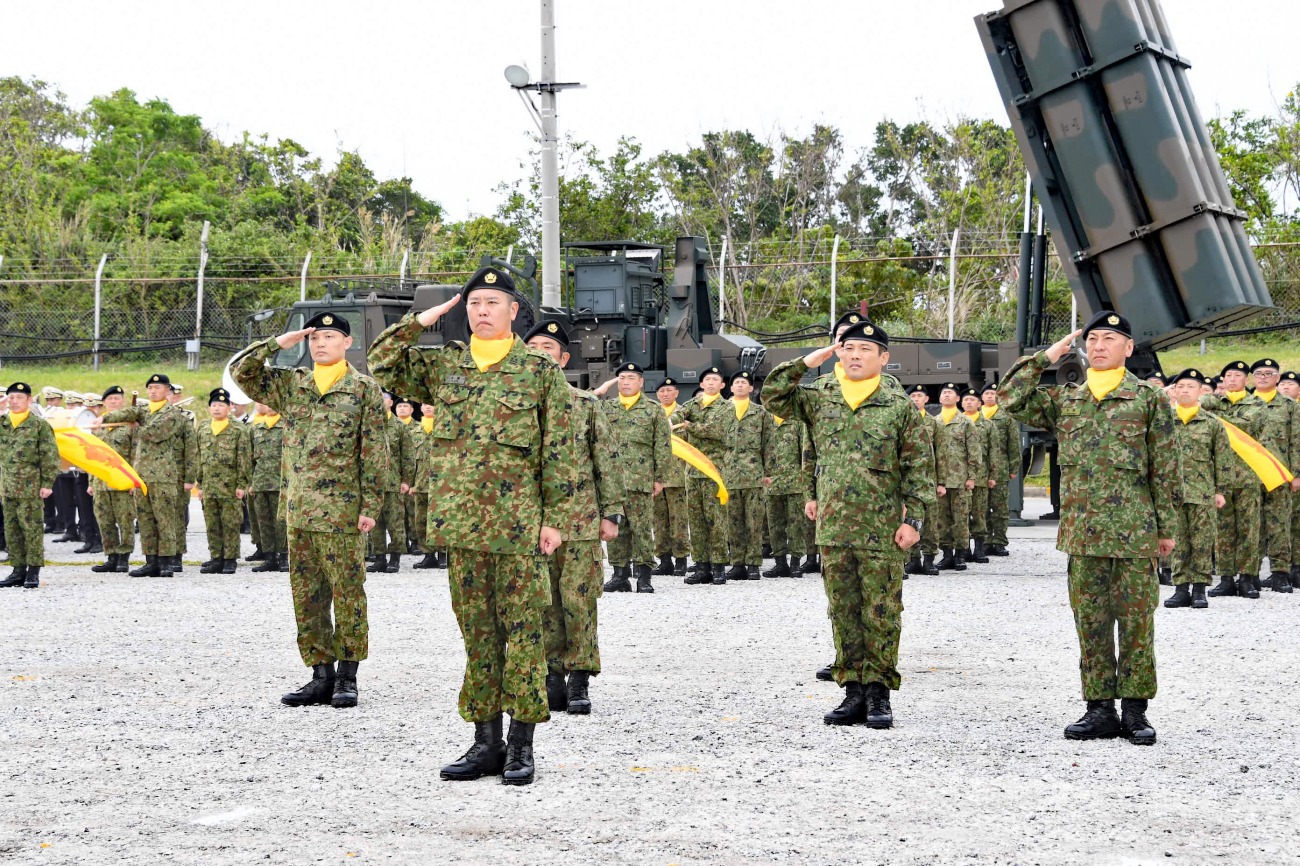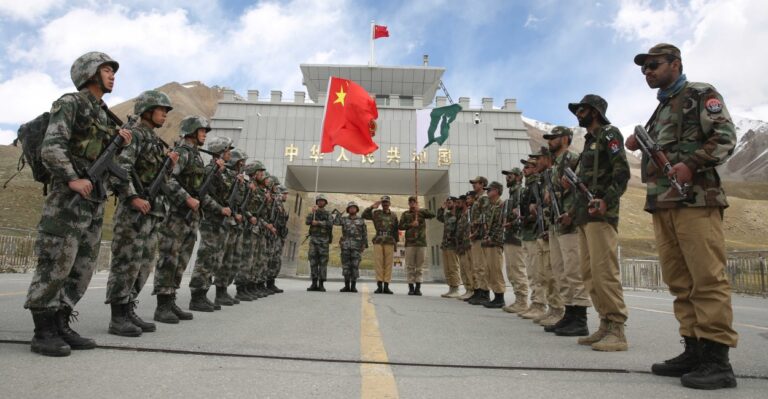While the world’s military budgets are continually increasing and new weapons and warfare platforms are being systematically produced and conceived, it is becoming increasingly difficult for advanced military powers to find enough young people to fight wars.
Following the devastating loss of the Su-57s, Russia once again deployed its stealth fighter jets in a massive missile attack on Ukrainian positions.
This may seem odd, but it is true even for nations fighting wars and those most concerned about possible enemy attack: They recognize that technology alone is not the solution to shrinking standing armies.
The Eurasian Times has already written about how both Russia and Ukraine are facing severe shortages of soldiers in their ongoing wars, and has also argued that the US is facing similar issues, leading to a weakening of Americans’ “will to fight.”
Even in Asia today, maintaining sufficient numbers of troops is an increasingly difficult challenge, especially in countries at war, such as Israel, or those expecting to be forced into war, such as Japan, South Korea, and Taiwan.

Take the example of Israel: The country is in the midst of a serious war with the terrorist organization Hamas. Israel’s very reputation as the strongest military in the Middle East is now at stake. Yet Israel has an estimated 15,000 active combat personnel.
Israel is currently heavily dependent on its reserve troops and reserve brigades, who are under temporary mobilization orders. The prolonged commitment of these reservists, who are farmers, teachers, factory workers, and civilian office workers, will have a devastating effect on the Israeli economy, costing it billions of dollars.
Taiwan is one of them: As Taipei braces for a potential conflict with Beijing, it is reportedly debating whether to allow foreign nationals to serve in the military, which could bolster dwindling recruitment quotas – a system that is common in some form in some countries, including Australia and the United States.
The United States has a recruitment program called Military Enlistments Vital to the National Interest (MAVNI) that allows certain non-U.S. citizens to enlist in the military and apply for citizenship.
Taiwan’s military currently comprises 80 percent of its military strength, according to a recent Ministry of National Defense report. The number of military-age men fell from 102,740 in 2022 to 97,828 last year and could fall to as low as 74,036 by 2031, the report said.
This is said to be happening despite government attempts dating back at least 15 years to move to a volunteer military made up of professional and reliable fighting personnel.
Taiwan has relaxed military enlistment requirements, increasing the minimum height for men from 157cm (5ft) to 155cm (5ft), and also allowing men with a BMI between 15 and 35 to join.
Taiwan, like other developed countries, appears to be finding that a declining population, competition from the private sector, and inadequate military pay are causing recruitment problems. Taiwan’s birth rate is one of the lowest in the world, and its total population is falling rapidly.
The same is true for South Korea. While many developed countries face demographic challenges, the problem is particularly acute for South Korea and its military.
According to South Korean government statistics for 2022, the total fertility rate for South Korean women has fallen to 0.78, the lowest among member states of the Organization for Economic Cooperation and Development (OECD). Naturally, this has a negative impact on military recruitment in a country that is still at war with North Korea (the 1950 Korean War is not over, and there has only been a ceasefire since 1953).

Based on South Korea’s current defense policy and demographics, there will reportedly be only 220,000 men eligible for conscription by 2025, despite an official goal of at least 260,000 enlisting each year. Seoul has a conscript army. The law requires able-bodied men to serve 18 months in the military.
According to a report published in July by Cho Kwan-ho, a senior researcher at the Korea Institute for Defense Studies, the number of South Korean military personnel will be 480,000 as of 2022, falling below the 500,000 mark for the first time. This is roughly 40% of the North Korean military’s estimated 1.14 million personnel.
In his report, Cho projects that South Korea’s military size will remain at an average of 470,000 over the next decade, but that number is expected to fall to 396,000 by 2038. In South Korea, which has one of the lowest birth rates, the projected decline in military numbers could pose serious concerns for the country’s national security.
Under current law, all able-bodied South Korean men over the age of 19 are required to serve at least 18 months in the Army or Marine Corps, 20 months in the Navy, and 21 months in the Air Force. Women can volunteer to serve as officers or non-commissioned officers. South Korean leaders and officials are currently debating whether mandatory conscription should be extended to women.
Other measures under discussion include extending military service to orphans and North Korean defectors, who are currently exempt from military service, and allowing healthy young foreigners who pass a Korean language proficiency test to volunteer for military service and then be granted citizenship.
But Japan, which, unlike South Korea, has no mandatory military service and no voluntary influx of immigrants to count on, faces a bigger challenge: a yearly decline in the number of people signing up to join its military, known as the Self-Defense Forces.
According to the Japan Times, the number of people applying to join the Self-Defense Forces had fallen by about 30 percent over the past decade as of November last year.
The current target personnel level for the Self-Defense Forces is 247,154, but as of the end of March it stood at 230,754, 16,400 short of the target. The Ground Self-Defense Force, by far the largest of the military forces, is the most affected, with a personnel shortfall of about 11,000.
The number of Japanese between the ages of 18 and 26, who are the main recruits for the SDF’s junior ranks, is said to have fallen from 17 million 30 years ago to around 10 million, and is expected to fall further in the future.

But with a rapidly ageing and shrinking population — about a third of Japanese are over 65 and births last year hit a record low — experts worry the military will no longer be able to staff traditional fleets and squadrons.
As a result, although it varies by rank, more people are being rehired after retirement, and more are being asked to take on administrative roles. In fact, the upper age limit for junior reserve officers was raised from 36 to 54 in 2018.
Besides the low birth rate, there also seems to be a so-called “image problem”: joining the Self-Defense Forces is not seen as prestigious (though its exemplary rescue and recovery efforts in times of natural disasters have been praised) and it is not seen as financially rewarding.
In fact, a 2015 poll by Gallup International found that Japanese people were the least willing to fight for their country among all nationalities surveyed, with only 11% saying they would, compared with 42% of South Koreans and a staggering 71% of Chinese. Not much seems to have changed since then.
US Air Force ‘loses interest’ in F-22 Raptor; could get 32 of the latest stealth fighters for just $3.3 billion
It is true that Japan’s Ministry of Defense has recently been trying hard to attract young college graduates to join the Self-Defense Forces, offering them better pay and a better quality of life.
Rather, the above examples demonstrate the difficulty East Asian countries are facing in reversing the downward trend in recruitment despite significant funding and policy efforts to attract young people to their militaries. This comes at a time when all three countries, especially Japan and Taiwan, are seriously concerned about the designs of a hegemonic China.
But equally notable is that China, the world’s largest military and potential aggressor, is also struggling to gather enough volunteers, even though 71% of its citizens are willing to fight.Interestingly, the Gallup poll puts Pakistan (89%) ahead of India (75%) and China.Topping the list are Morocco and Fiji, each with 94%.
- Author and veteran journalist Prakash Nanda is the Executive Editor of the Eurasian Times and has been commenting on politics, foreign policy and strategic issues for nearly three decades. A former National Fellow of the Indian Council of Historical Research and a recipient of the Seoul Peace Prize Scholarship, he is also a Distinguished Research Fellow at the Institute for Peace and Conflict Studies.
- Contact: prakash.nanda (at) hotmail.com
- Follow EurAsian Times on Google News

